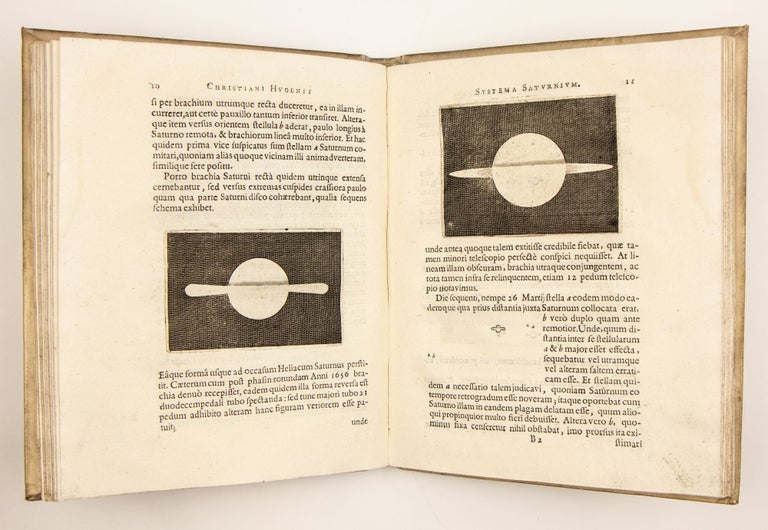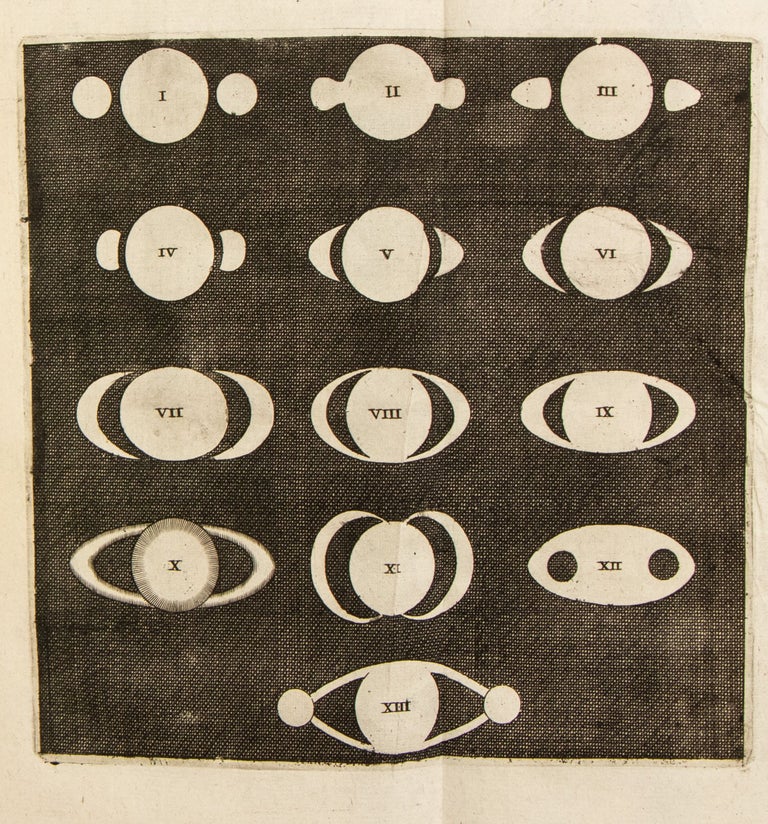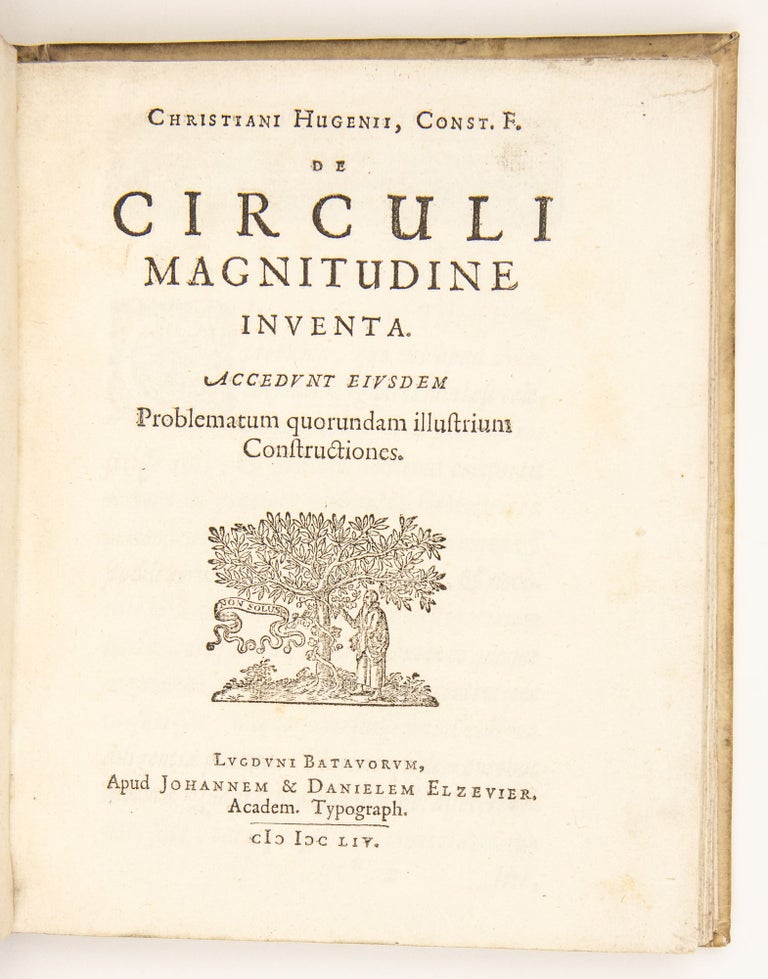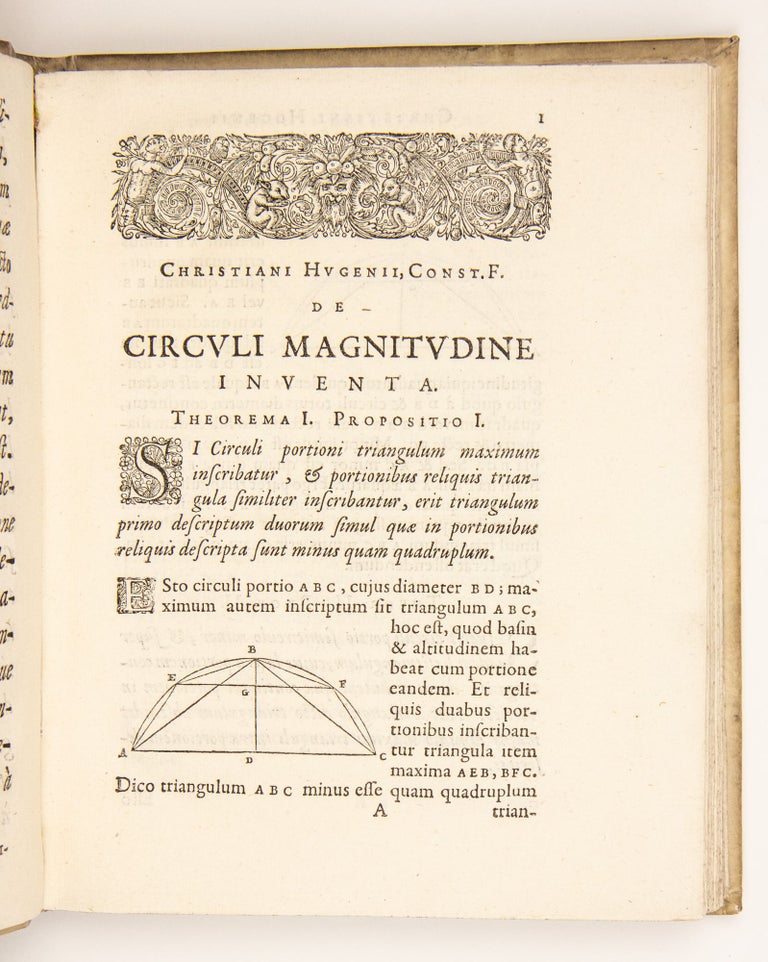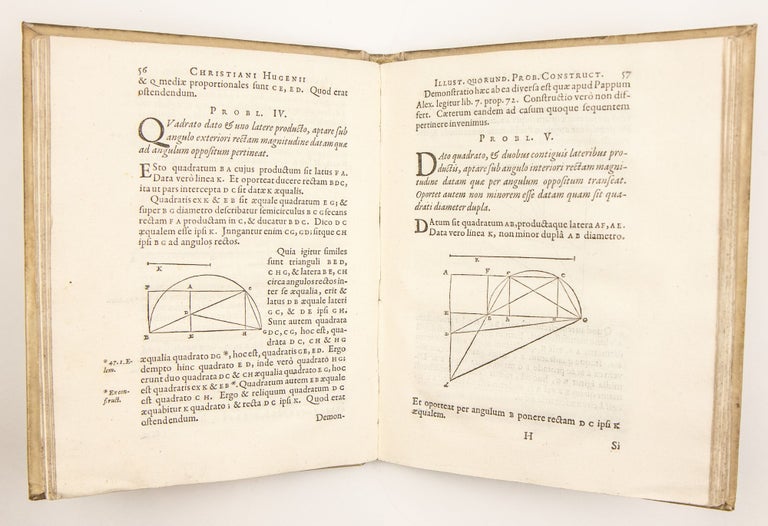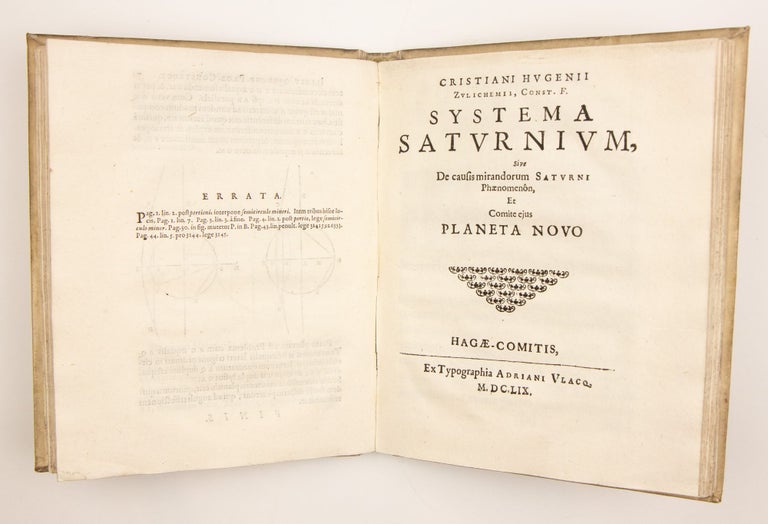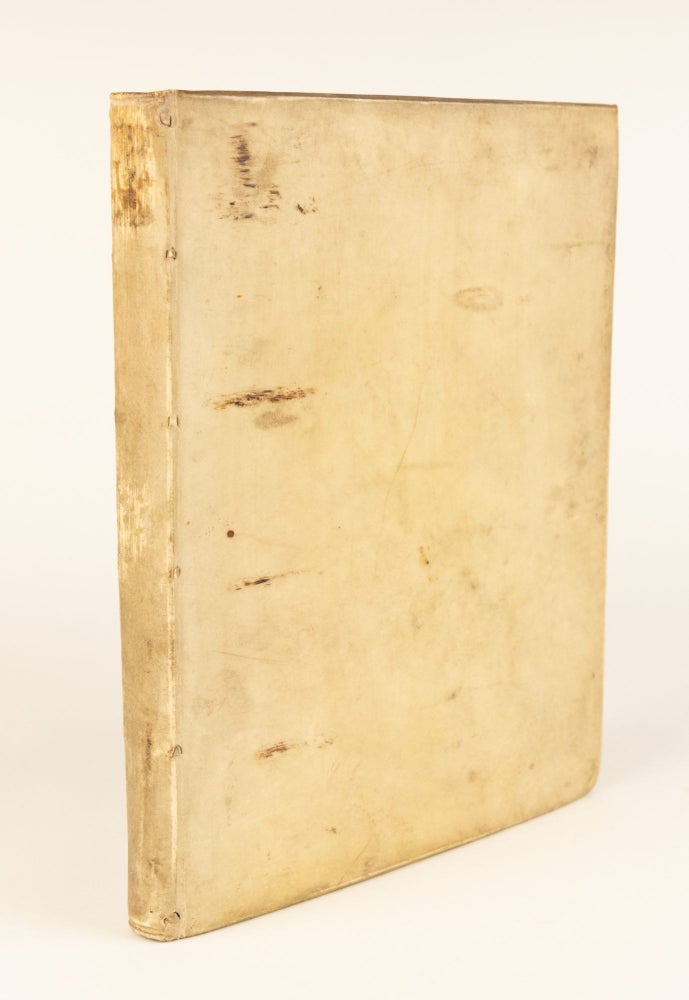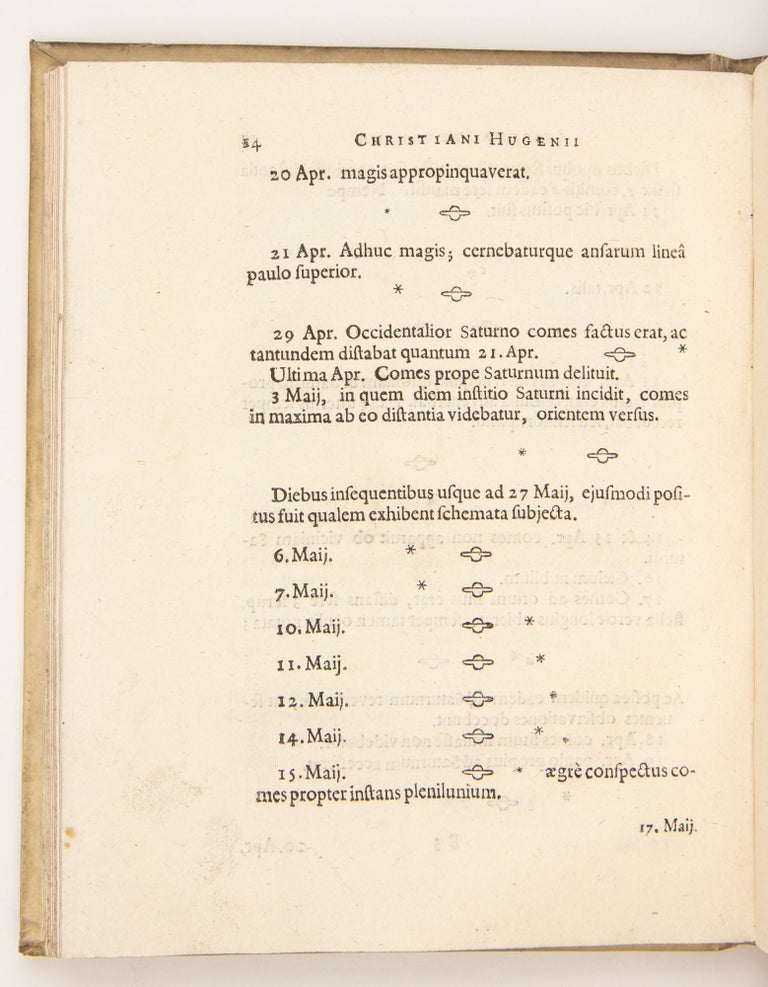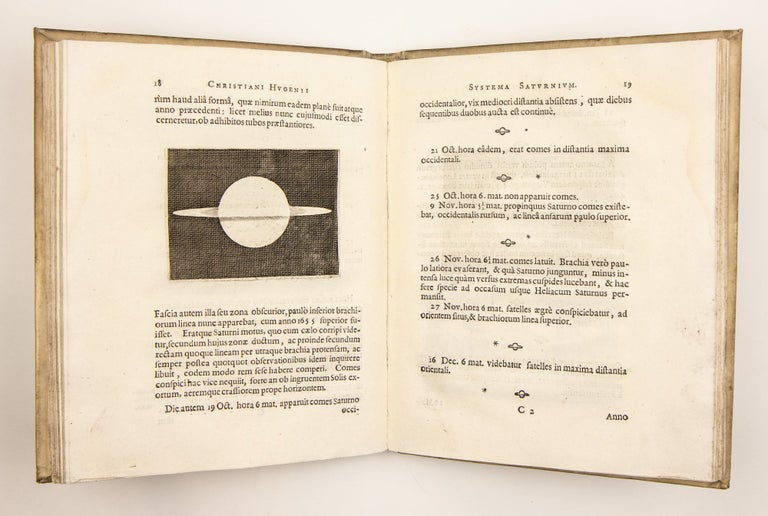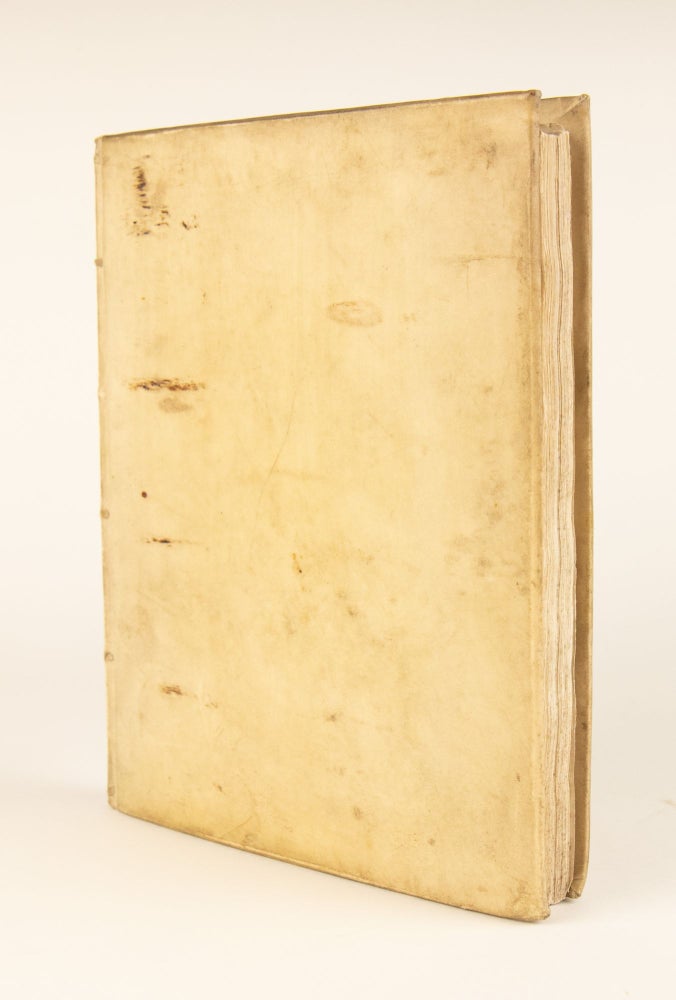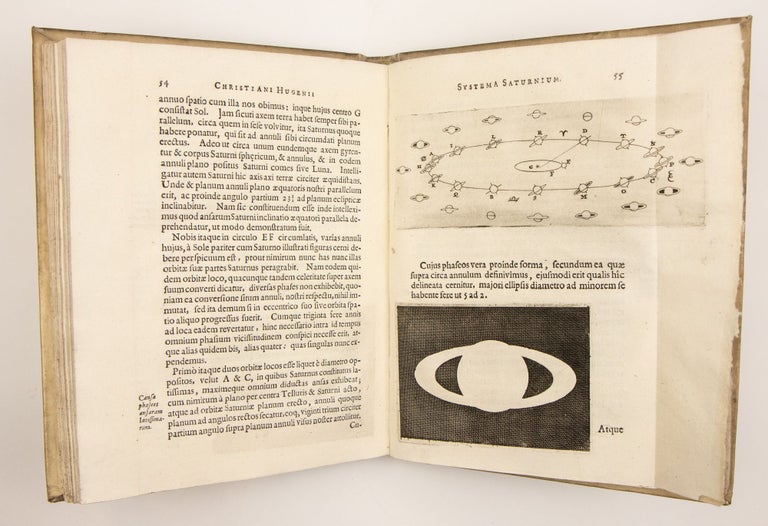Systema Saturnium, sive de causis mirandorum Saturni phaenomenon, et comite eius planeta novo.
The Hague: Adrian Vlacq, 1659.
Price: $125,000.00
Quarto: 20 x 16 cm. (12), 84 p., Collation: ()4, B2, A-K4, L2. Plus 1 folding engraved plate.
FIRST EDITION.
[Bound with:]
De circuli magnitudine inventa. Accedunt eiusdem problematum quorundam illustrium constructiones.
Leiden: Elzevir, 1654
Quarto: II. (8), 71, (1) p. Collation: *4, A-I4
FIRST EDITION of Huygens' landmark work on Saturn bound with the FIRST EDITION of Huygens’ work on the quadrature of the circle, “De circuli magnitudine inventa.”(1654). Very fine copies in contemporary vellum with a very pale damp-stain to leading edge of a few leaves. First work with 11 engravings in the text, several woodcut diagrams, and 1 folding engraved plate. Vellum scuffed and marked with minor soiling.
The first edition of Huygens’ announcement of the discovery of the rings of Saturn and the planet’s enormous moon, Titan. The work was preceded by a one-sentence anagram by planted by Huygens in Petrus Borel’s “De vero telescopii inventore” (1655/56) to secure priority of his discovery. The title of the book reads “The System of Saturn, or On the matter of Saturn's remarkable appearance, and its satellite, the new planet.”
Around 1654 Huygens and his brother Constantijn devised a new and better way of grinding and polishing lenses. In early 1655, the Huygens brothers completed a telescope with an objective focal length of 377 cm. (twelve feet), an estimated ocular focal length of 7.5 cm, and a magnification of about 50. The original objective of this telescope (0.32 cm thick, 5.7 cm diameter) is now kept in the Museum Boerhaave at Leiden. The telescopes constructed by Huygens were the best and most powerful of his time. On 25 March 1655 he directed his telescope towards the planets, first to Venus and Mars, later to Jupiter and Saturn.
"With the first telescope he and his brother had built, Huygens discovered, in March 1655, a satellite of Saturn, later named Titan. He determined its period of revolution to be about 16 days, and noted that the satellite moved in the same plane as the ‘arms’ of Saturn. Those extraordinary appendages of the planet had presented astronomers since Galileo with a serious problem of interpretation; Huygens solved these problems with the hypothesis that Saturn is surrounded by a ring. He arrived at this solution partly through the use of better observational equipment, but also by an acute argument based on the use of the Cartesian vortex (the whirl of celestial matter around a heavenly body supporting its satellites.)" Bos, DSB VI.604
The ‘Systema Saturnium’ also describes the observations of the Orion nebula, discovered by Huygens in 1656.
"Although Galileo had observed the peculiar shape of the planet Saturn, it was the advanced telescope construction and observation of Huygens that led to a correct analysis of its changes. In ‘Systema Saturnium’ the rings and satellites of Saturn were described, also the explanation of their appearance and disappearance, and a micrometer used in making the observations." (Dibner, Heralds)
"‘Systema Saturnium’ opens with the preface to Prince Leopold. In this preface Huygens declares that Saturn, its ring, and its satellite forms a system which supports the Copernican system of a heliocentric universe. The preface is followed by an encomium to Huygens by Nicolaas Heinsius and a poem on the Saturnian system by Huygens's brother Constantijn. The main text begins with descriptions of Huygens's telescopes and some of his early observations of other planets, stars, and the Great Nebula in Orion. Then his discussion turns to the discovery of Saturn's moon and the determination of its orbital period around Saturn.
"On page 34, Huygens begins the discussion of the changing and unusual nature of Saturn's appearance. He discusses earlier observations of the planet going back to Galileo, notes how these observations suffered from the use of inadequate telescopes, and goes into some detail on the hypotheses of Hevelius, Roberval, and Hodierna. After arguing against these explanations, Huygens offers his theory of a thick solid ring circling Saturn at its equator and in equilibrium under Saturn's gravitational force. He then goes into detail about how the plane of the ring is tilted 20 degrees to the plane of Saturn's orbit and that the ring maintains a constant orientation as the planet orbits the Sun. This means that the ring's angle changes with respect to us and thus explained the varying appearance of Saturn. When the ring was edgewise to the Earth it would seem to practically disappear and then slowly the angle would change and the rings would open themselves back up to us. The book ends with Huygens's observations of all the planets and his calculations of their sizes in relation to the Sun." (Ronald Brashear)
The Magnitude of the Circle:
“In his first publication, ‘Theoremata de quadratura hyperboles, ellipses, et circuli’, Huygens derived a relation between the quadrature and the center of gravity of segments of circles, ellipses, and hyperbolas. He applied this result to the quadratures of the hyperbola and the circle. In the ‘De circuli magnitudine inventa’(1654) he approximated the center of gravity of a segment of a circle by the center of the gravity of a segment of a parabola, and thus found an approximation of the quadrature; with this he was able to refine the inequalities between the area of the circle and those of the inscribed and circumscribed polygons used in the calculations of π. The same approximation with segments of the parabola, in the case of the hyperbola, yields a quick and simple method to calculate logarithms, a finding he explained before the Academy in 1666–1667.”(DSB).
Dibner Heralds 9; H.J.M. Bos, DSB VI.597-613; King, History of the Telescope, pp. 51 & 97; Sparrow, Milestones of Science, p. 18 & plate 72; Norman 1136; PMM 154; Bierens de Haan 2210. II. Willems 746


